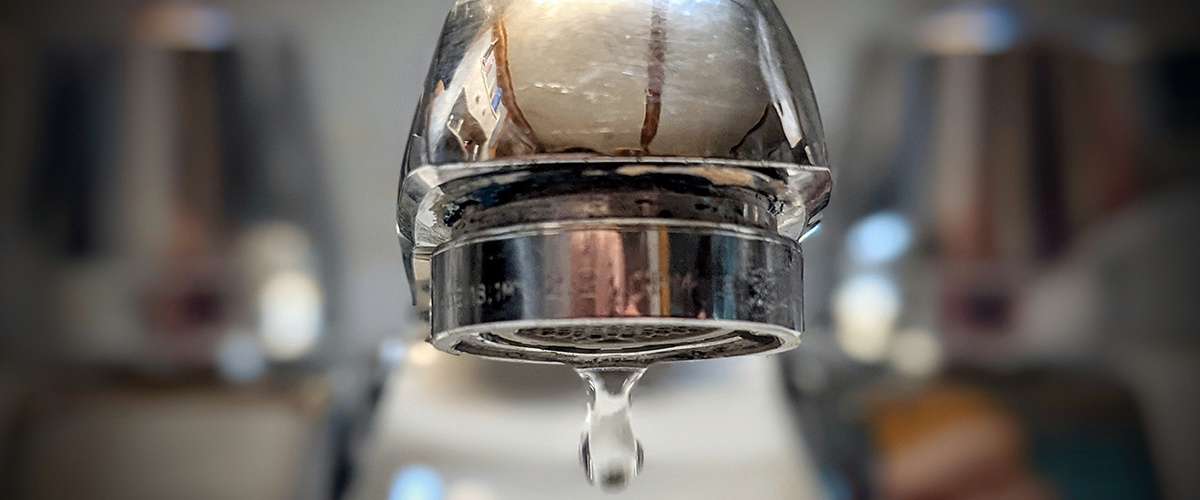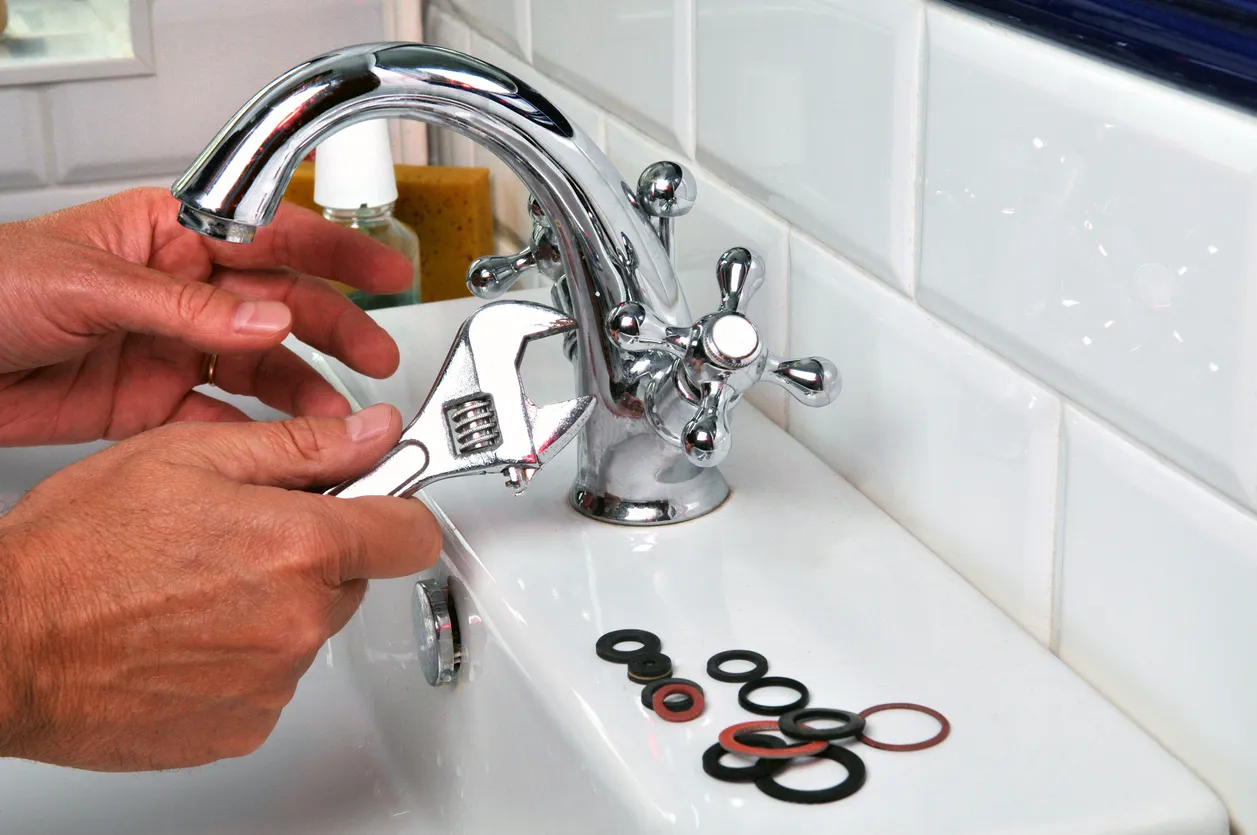Exploring the Significance of Resolving a Malfunctioning Faucet
Exploring the Significance of Resolving a Malfunctioning Faucet
Blog Article
What are your thoughts on 4 Common Reasons for a Leaky Faucet?

Leaking taps may feel like a minor inconvenience, but their effect exceeds simply the nuisance of the sound. From drainage to sustaining unnecessary economic costs and health risks, ignoring a leaking faucet can result in different consequences. In this article, we'll look into why it's crucial to resolve this typical household concern immediately and properly.
Waste of Water
Environmental Impact
Dripping faucets contribute substantially to water waste. According to the Epa (EPA), a single faucet dripping at one drip per second can waste greater than 3,000 gallons of water each year. This not only strains water resources yet additionally impacts environments and wildlife depending on them.
Financial Prices
Boosted Water Bills
Past the ecological effect, dripping taps can pump up water costs significantly. The accumulated wastefulness over time converts right into higher energy expenses, which might have been stayed clear of with timely repair services.
Possible Residential Property Damages
Moreover, prolonged dripping can lead to damage to fixtures and surfaces surrounding the faucet. Water build-up can trigger discoloration, rust, and even structural issues if left unattended, resulting in additional repair costs.
Wellness Problems
Mold And Mildew and Mold Growth
The constant visibility of wetness from a dripping faucet produces an optimal environment for mold and mildew and mildew growth. These fungi not just compromise interior air high quality but likewise position wellness risks, specifically for people with breathing conditions or allergic reactions.
Waterborne Diseases
Stationary water in trickling faucets can end up being a breeding ground for germs and various other virus, increasing the danger of waterborne illness. Impurities such as Legionella microorganisms grow in stagnant water, potentially resulting in severe health problems when consumed or breathed in.
Do it yourself vs. Professional Repair service
Benefits and drawbacks of Do It Yourself Repair Service
While some might attempt to repair a dripping faucet themselves, do it yourself fixings feature their very own set of challenges. Without correct understanding and tools, do it yourself attempts can intensify the problem or cause insufficient repair work, extending the issue.
Benefits of Employing a Specialist Plumber
Hiring an expert plumber makes sure that the underlying reason for the leaking faucet is dealt with successfully. Plumbings have the experience and tools to identify and fix faucet concerns effectively, conserving time and reducing the threat of further damages.
Step-by-Step Overview to Repairing a Dripping Tap
Tools Needed
Before trying to deal with a dripping faucet, gather the needed devices, consisting of an adjustable wrench, screwdrivers, replacement parts (such as washers or cartridges), and plumber's tape.
Typical Tap Issues and Their Solutions
Identify the type of faucet and the particular issue triggering the drip. Usual troubles consist of worn-out washing machines, rusty valve seats, or faulty O-rings. Describe producer instructions or on the internet tutorials for detailed assistance on fixings.
Safety nets
Normal Maintenance Tips
To stop dripping faucets, do regular maintenance such as cleaning up aerators, examining for leakages, and replacing damaged parts quickly. Additionally, think about installing water-saving tools or upgrading to extra reliable components.
Importance of Prompt Repairs
Dealing with trickling faucets as quickly as they're observed prevents additional water wastefulness and potential damage, inevitably conserving both water and cash in the long run.
Effect On Residential Or Commercial Property Value
Assumption of Well-Maintained Building
Preserving a residential property in good condition, consisting of dealing with upkeep concerns like dripping faucets, improves its viewed value and charm amongst prospective purchasers or occupants.
Impact on Resale Value
Characteristics with well-maintained plumbing fixtures, including faucets, command greater resale worths in the real estate market. Addressing dripping faucets can add to a favorable impact during property examinations and negotiations.
Ecological Obligation
Specific Payment to Preservation
Taking obligation for repairing leaking faucets aligns with more comprehensive efforts towards water preservation and environmental sustainability. Every person's actions jointly make a substantial effect on maintaining valuable sources.
Sustainable Living Practices
By prioritizing punctual fixings and adopting water-saving behaviors, people contribute to lasting living practices that profit both present and future generations.
Verdict
Resolving a trickling tap surpasses mere comfort; it's an important step towards saving water, minimizing financial prices, and securing health and residential or commercial property. Whether via DIY repair work or specialist assistance, doing something about it to deal with dripping faucets is a tiny yet impactful method to advertise accountable stewardship of resources and add to a healthier, more sustainable future.
Why Are My Faucets Dripping (And Can I Fix it Myself)?
Causes of a Dripping or Leaking Faucet
Whether you’re hearing drops of water falling and hitting a sink, or noticing water ooze out from the base of the spout, you shouldn’t ignore a dripping or leaking faucet. And, the good news is, sometimes you can fix the problem yourself.
In this article, we’ll review a few common causes of dripping and leaky. We’ll also walk you through some basic ways to find the problem and handle it without calling anyone — and let you know when to call in a pro.
But, no matter what the cause, or whether you can handle it on your own, the sooner you address it, the better.
Each drip may be a tiny amount of water. But, they all add up quickly. According to the U.S. Geological Survey, one faucet losing one drop every 20 seconds — five a minute — wastes around a liter of water every day, and 173 gallons a year.
Add in more than one in your house, and it’s a lot of water to waste. So, we’ll help you get to the bottom of things quickly.
Four Reasons Your Faucet May Be Dripping
Aerator is Damaged or Unseated Valve Seat is Corroded O Ring is Loose or Worn Out Part of the Assembly is Loose Aerator is Damaged or Unseated
If you unscrew the end of your faucet, you’ll find the aerator. It’s the little stem piece with a screen on it that shuts off the water circulation.
If it’s damaged, or if it’s not sitting right, it will allow water to pass through.
Valve Seat is Corroded
Next is the valve seat, which is connected to the washer. If the washer wasn’t in place correctly, then it could have ground against the seat. Over time, this damages the valve seat.
The problem could also be corrosion: Over time, the part has worn out, and it’s now allowing water to pass through.
O Ring is Loose or Worn Out
Since the o ring is only a small rubber gasket, it’s a common reason why the faucet is dripping. You’ll find it at the base of the faucet, and it’s there to keep water from coming out where it’s not supposed to.
However, it’s common for the o ring to wear out over time. When it does, you’ll notice a drip.
Part of the Assembly is Loose
So far, we’ve looked at a few small, specific parts. But, the problem could be anywhere in the assembly if something’s out of place.
Even if a part isn’t damaged, over time, it may have become loose or dislodged. It could be the parts we mentioned, or the aerator at the tip of the faucet, the stem itself,
Can I Fix a Leaky Faucet Myself?
Depending on the problem, and how handy you are, there’s a chance you can fix a leaky faucet without calling a professional. But, you do run the risk of making the problem worse.
If it’s a small drip, you can certainly try a few troubleshooting tactics. We’ll walk you through them in a moment.
But, no matter what, your first step should be shutting off the water coming into the faucet. You should find a shutoff valve under the sink on the pipes leading to it. Turn each one clockwise until they close tightly.
Next, make sure you have the right tools for whatever you’re attempting. It’s tempting to make do with what you have. But, you need the right ones for a reason: You’re often dealing with small parts that can break if you handle them carelessly.
If you’re feeling confident, here are some places to start.
Items Near the Tip of the Faucet
A few of the parts we mentioned — particularly the valve seat and washer — are located at the tip of the faucet where the water comes out. They’re easy to access, making it a good place to start.
Check the O Ring
To check the o ring, you’ll need to take off the spout at the base. It’s easiest on kitchen sinks with long spouts, versus the smaller, bulkier base on most bathroom sinks.
Either way, this can be tricky, so do it carefully and don’t force anything. If it’s not coming right off, you’re much better off calling in a pro than possibly breaking something.
For a kitchen sink, there’s usually a nut or coupling assembly at the base of the spout. These often slide off easily without using any tools.
Once you’ve disassembled those parts, gently but forcefully twist off the spout.
Then, you can see the o rings. There should be two of the rubber gaskets on the base. If they look worn or damaged, replace them, and see if that solves the problem.

I discovered that blog posting on What Causes Leaky Faucets & How To Fix Them when doing a lookup on the search engines. Remember to take the opportunity to share this entry if you enjoyed reading it. Thanks a lot for being here. Kindly come by our blog back soon.
Report this page